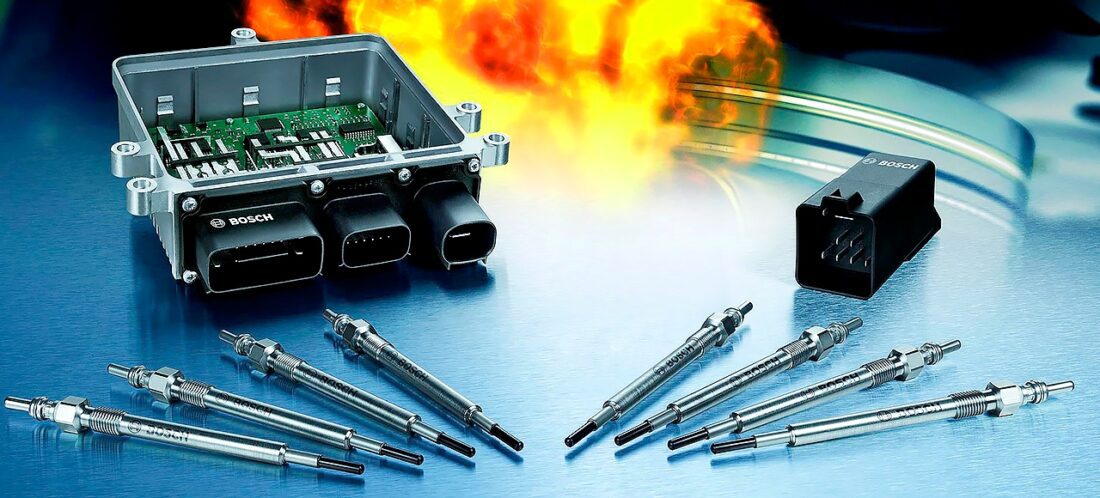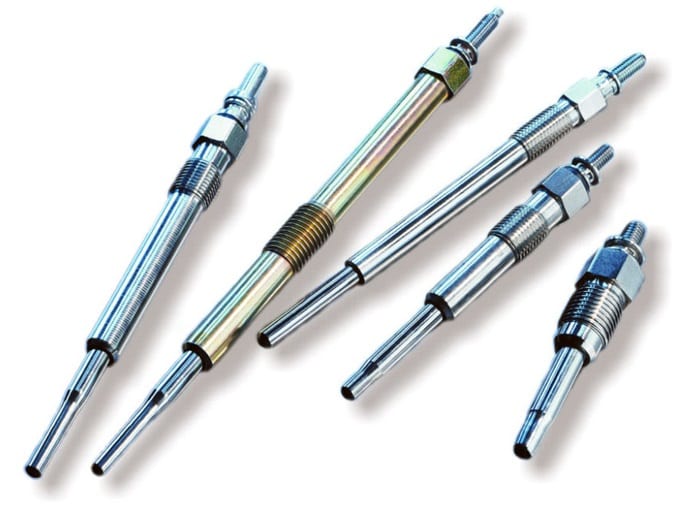
All About Glow Plugs for Diesel Engines
Content
- What are car glow plugs
- Working principle and function of the glow plug
- Glow plug design
- Where are these candles installed?
- Varieties of glow plugs and their device
- Glow plug control
- Malfunctioning glow plugs in diesel engines
- Which shortens the life of the candles
- Checking the glow plugs
- Questions and answers:
The glow plug is an integral part of a modern diesel engine. The gasoline unit works on such a principle that it does not need this element (some modifications are optionally installed with these parts to facilitate the cold start of the internal combustion engine).
Learn more about the difference between gasoline and diesel engines. in another review... Now let's focus on what function the glow plug performs, how it works and what reduces its working life.
What are car glow plugs
Externally, the glow plug is similar to the spark plug that is installed in gasoline engines. It differs from its counterpart in that it does not create a spark to ignite the air-fuel mixture.
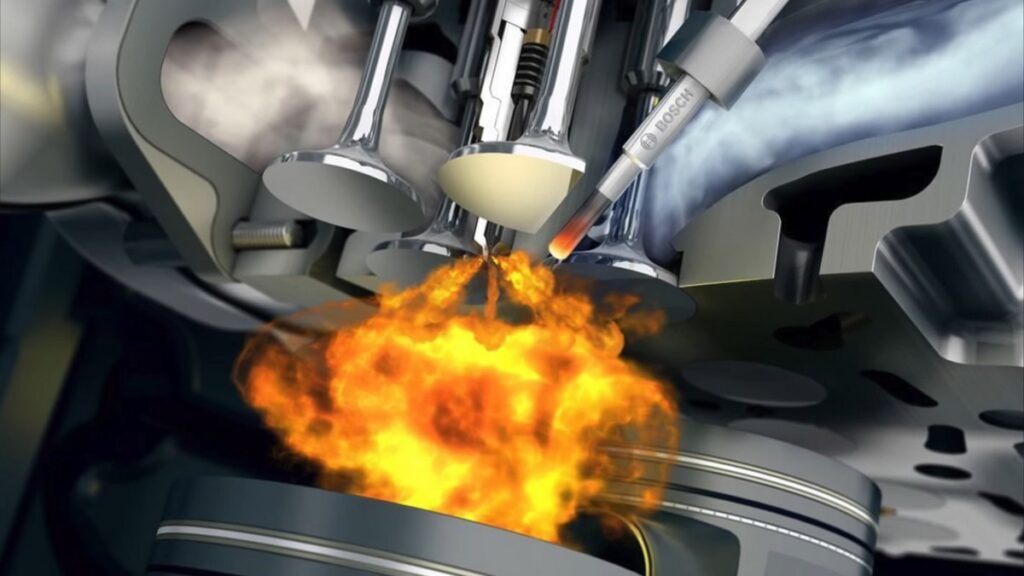
A malfunction of this element leads to the fact that when cold weather sets in (when the air temperature drops below +5), the diesel unit begins to be capricious or does not want to start at all. If the start of the motor is radio-controlled (many modern models are equipped with a system that starts the internal combustion engine by a signal received from the button on the key fob), then the system will not torment the unit, but simply will not start it.
Similar parts are used in carburetor glow plug engines, as well as in autonomous interior heaters. Within the framework of this article, we will consider the purpose of the candles that are used in the diesel engine prestarting system.
Working principle and function of the glow plug
Each cylinder of the diesel unit is equipped with both an individual injector and its own glow plug. It is powered by the vehicle's electrical system. When the driver activates the ignition before cranking the starter, he waits for the coil indication on the dashboard to disappear.
While the corresponding indicator on the tidy is on, the spark plug will heat the air in the cylinder. This process lasts from two to five seconds (in modern models). The installation of these parts is mandatory in a diesel engine. The reason lies in the principle of operation of the unit.
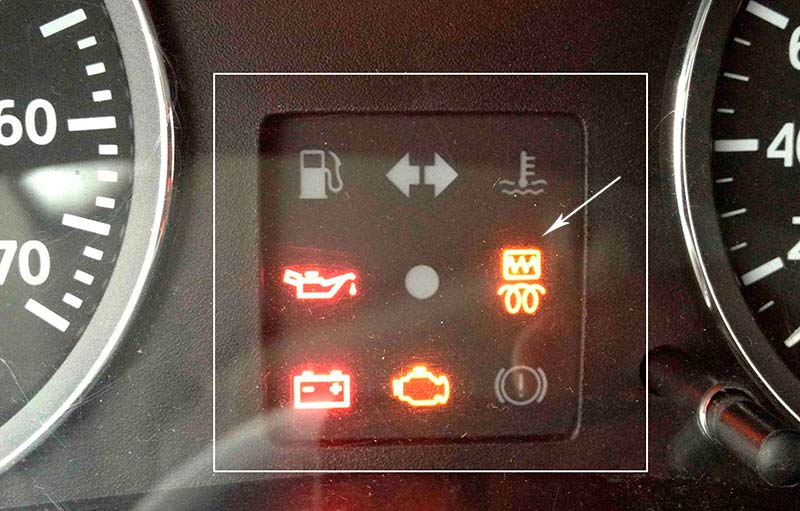
When the crankshaft turns, the piston on the compression stroke compresses the air entering the cavity. Due to the high pressure, the medium heats up to the ignition temperature of the fuel (about 900 degrees). When diesel fuel is injected into a compressed medium, it ignites on its own without forced ignition, as in gasoline internal combustion engines.
It is with this that the difficult start of a cold engine is associated with the onset of cold weather. During cold start, the diesel engine suffers from low air and diesel temperatures. Even highly compressed air in the cylinder may not reach the ignition temperature of the heavy fuel.
In order for the unit to stabilize faster in the first minutes, it is necessary to heat the air and the fuel sprayed into the cylinder chamber. The candle itself maintains the temperature in the cylinder chamber, as its tip heats up to 1000-1400 degrees Celsius. As soon as the diesel reaches operating temperature, the device is deactivated.
So, in an ICE powered by heavy fuel, a spark plug is needed for the following purposes:
- Heat the air in the cylinder that performs the compression stroke. This increases the temperature of the air in the cylinder;
- To make the ignition of diesel fuel more efficient in any operating mode of the internal combustion engine. Thanks to this, the unit can be started equally easily, both in summer and in winter.
- In modern engines, candles do not stop working for several minutes after starting the internal combustion engine. The reason is that cold diesel fuel, even if well sprayed, burns worse in an unheated engine. To ensure that the vehicle meets environmental standards, regardless of the operating time of the unit. Completely burnt fuel does not spoil the particulate filter as much as the exhaust with fuel particles (read about what a particulate filter is and about its functions in a diesel engine here). Since the air / fuel mixture burns out completely, the engine makes less noise during starting.
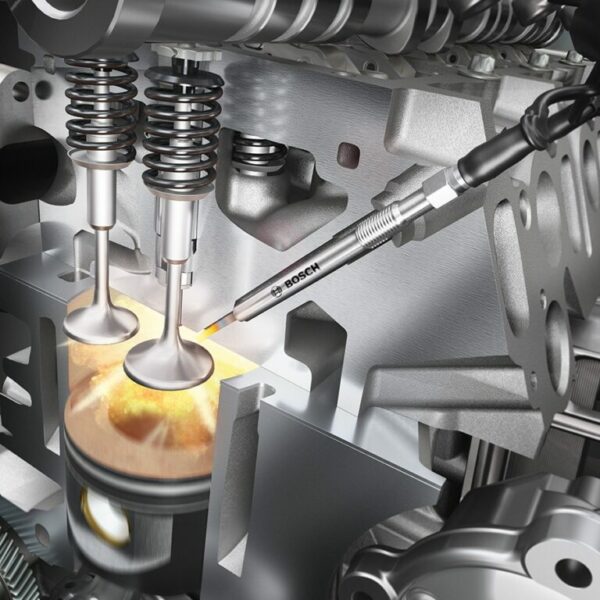
Before you can start driving, the driver must wait until the indicator lamp on the tidy goes out, indicating that the candle continues to work. In many cars, the circuit to which the heating of the chambers in the cylinders is connected is synchronized with the cooling system. Glow plugs continue to work until the coolant temperature sensor detects the engine output to operating temperature (within what limits this indicator is, it says here). This usually takes about three minutes depending on the ambient temperature.
In many modern cars, the control unit detects the temperature of the coolant and if this indicator exceeds 60 degrees, it does not turn on the spark plugs.
Glow plug design
Heaters have different designs and are made of different materials, but basically their device consists of the following elements:
- Fastening the power wire to the central rod;
- Protective shell;
- Spiral electric heater (in some modifications there is also an adjusting spiral element);
- Heat-conducting filler;
- Retainer (thread allowing the element to be installed in the cylinder head).

Regardless of their design, their principle of operation is similar. The adjusting coil maintains the operating temperature in the cavity. The resistance in this element directly affects the heating of the tip - as the temperature in this circuit increases, the current flowing into the heating coil decreases. Thanks to this design, the glow plug does not fail from overheating.
As soon as the core heats up to a certain temperature, the regulating coil begins to heat up, from which less current flows to the main element and it begins to cool. Since the temperature of the control circuit is not maintained, this spiral also begins to cool, which reduces the resistance, and more current begins to flow to the main heater. The candle starts glowing again.
A heat-conducting filler is located between these spirals and the body. It protects thin elements from mechanical stress (excessive pressure, expansion during the combustion of BTC). The peculiarity of this material is that it provides heating of the glow tube without heat loss.
The connection diagram of glow plugs and their operating time may be different in individual motors. These factors can change depending on the technology that the manufacturer implements in its products. Depending on the type of candles, they can be supplied with different voltages, they can be made of other materials, etc.
Where are these candles installed?
Since the purpose of glow plugs is to heat the chamber in the cylinder and stabilize the ignition of the BTC, it will stand in the cylinder head, like a spark plug. The exact setting depends on the type of motor. For example, old car models are equipped with motors with two valves on one cylinder (one for the inlet, the other for the outlet). In such modifications, there is enough space in the cylinder chamber, so thick and short plugs were used earlier, the tip of which was located near the fuel injector sprayer.
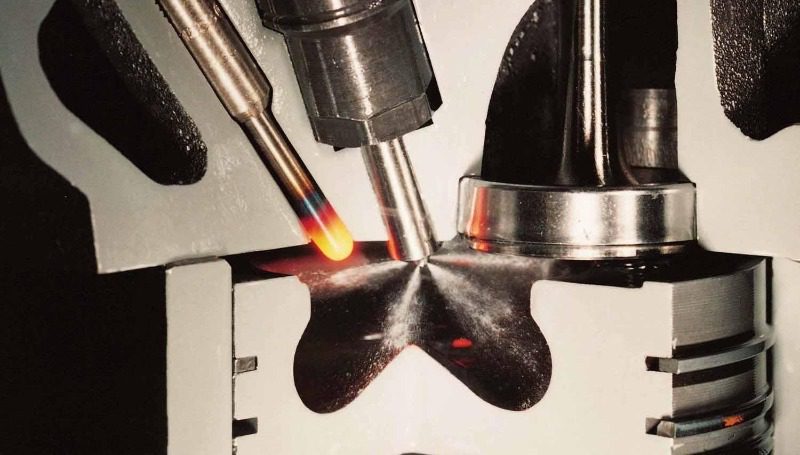
In modern diesel units, a Common Rail fuel system can be installed (the features of this type of fuel systems are described in another article). In such modifications, 4 valves are already relied on one cylinder (two at the inlet, two at the outlet). Naturally, such a design takes up free space, so a long and thin glow plug is installed in such internal combustion engines.
Depending on the design of the cylinder head, the motor may have a vortex chamber or an antechamber, or may not have such elements. Regardless of the design of this part of the unit, the glow plug will always be in the fuel spray area.
Varieties of glow plugs and their device
With the introduction of new technologies, the design of engines is constantly changing. Along with this, the device of glow plugs is also changing. They not only get a different shape, but also other materials that shorten the heating period and their life.
Here's how different modifications differ from each other:
- Open heating elements. This modification was used on older engines. They have a small working life, since due to the mechanical effect on the spiral, it quickly burned out or burst.
- Closed heating elements. All modern elements are manufactured in this design. Their design includes a hollow tube into which a special powder is poured. Thanks to this design, the spiral is protected from damage. The peculiarity of the filler is that it has good thermal conductivity, due to which a minimum of the candle's resource is used for heating.
- Single or double pole. In the first case, the positive contact is connected to the core terminal, and the negative contact to the body through a threaded connection. The second version has two terminals, which are marked according to the poles.
- Speed of work. Glow plugs used to heat up for up to one minute. The modern modification is capable of heating up in 10 seconds. Variants equipped with a control coil respond even faster - from two to five seconds. The latter became possible due to the peculiarity of the conductive elements (when the control coil heats up, the current conductivity decreases, as a result of which the main heater stops heating up), which reduces the response time.
- Sheath material. Most candles are made from identical materials. The only difference is the tip, which gets hot. It can be made of metal (iron, chromium, nickel) or silicon nitrite (ceramic alloy with high thermal conductivity). In the first case, the tip cavity is filled with powder, which will consist of magnesium oxide. In addition to thermal conductivity, it also performs a damping function - it protects a thin spiral from motor vibrations. The ceramic version can be triggered as quickly as possible, so that the driver can start the engine almost immediately after turning the key in the ignition. Machines that meet the environmental standards Euro 5 and Euro 6 are equipped with ceramic candles only. In addition to the fact that they have a long service life, they ensure the highest quality combustion of the air-fuel mixture, even in a cold engine.

- Voltage. In addition to different designs, candles can operate on different voltages. This parameter is determined by the manufacturer of the device based on the characteristics of the car's on-board network. They can be switched on from a voltage ranging from 6 volts to 24V. There are modifications in which the maximum voltage is applied to the heater during start-up, and during the heating of the unit, the resistance increases, thereby reducing the load on the control coil.
- Resistance. Metallic and ceramic look have different resistance values. The filament can be between 0.5 and 1.8 ohms.
- How quickly they heat up and to what extent. Each candle model has its own indicator of temperature and heating rate. Depending on the modification of the device, the tip can be heated up to 1000-1400 degrees Celsius. The maximum heating indicator for ceramic types, since the spiral in them is less susceptible to burnout. The heating rate is influenced by which heater connection is used in a particular model. For example, in versions with one relay, this period in the case of a metal tip lasts about 4 seconds, and if a ceramic tip, then a maximum of 11 seconds. There are options with two relays. One is responsible for the glow before starting the engine, and the second for maintaining the operating temperature during the warming up of the unit. In this version, the pre-start is triggered for up to five seconds. Then, while the engine is warming up to operating temperature, the candles work in light mode.
Glow plug control
The heating element is cooled down due to the entry of a fresh portion of air into the cylinder. When the car is moving, colder air enters the intake tract, and when it is stationary, this flow is warmer. These factors influence the cooling rate of glow plugs. Since different modes require their own degree of heating, this parameter must be adjusted.
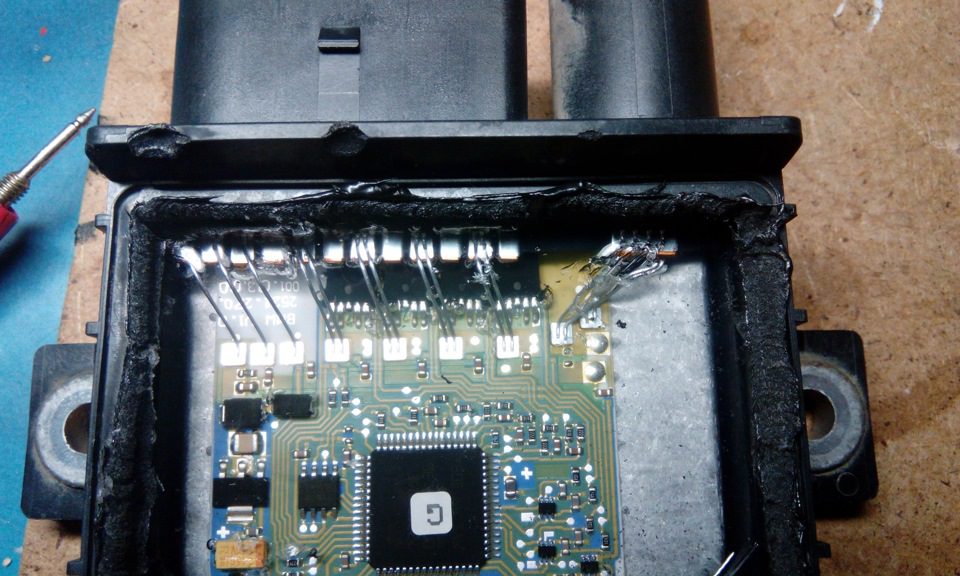
All these processes are regulated by an electronic control unit. Depending on the operation of the motor, the ECU changes the voltage on the heaters to reduce the risk of overheating while the car is stationary.
In expensive cars, such electronics are installed, which not only allows you to glow a candle in a short period, but also to control the operation of each of them separately.
Malfunctioning glow plugs in diesel engines
The service of glow plugs depends on factors such as the characteristics of the device, the materials from which the product is made, and the operating conditions. However, they do not need to be changed as part of routine engine maintenance, as is the case with spark plugs (for how to determine when to change spark plugs, read here).
This is usually done as soon as a failure or signs of unstable operation appear. Most often this happens 1-2 years after installation, but this is all very relative, since each motorist uses the car in his own way (one drives more, and the other less).
You can identify a candle that will break soon at a service station during computer diagnostics. Problems with candles in the summer are extremely rare in the operation of the motor. In the summer, the air is warmed up enough for diesel fuel to ignite in the cylinder without a heater.
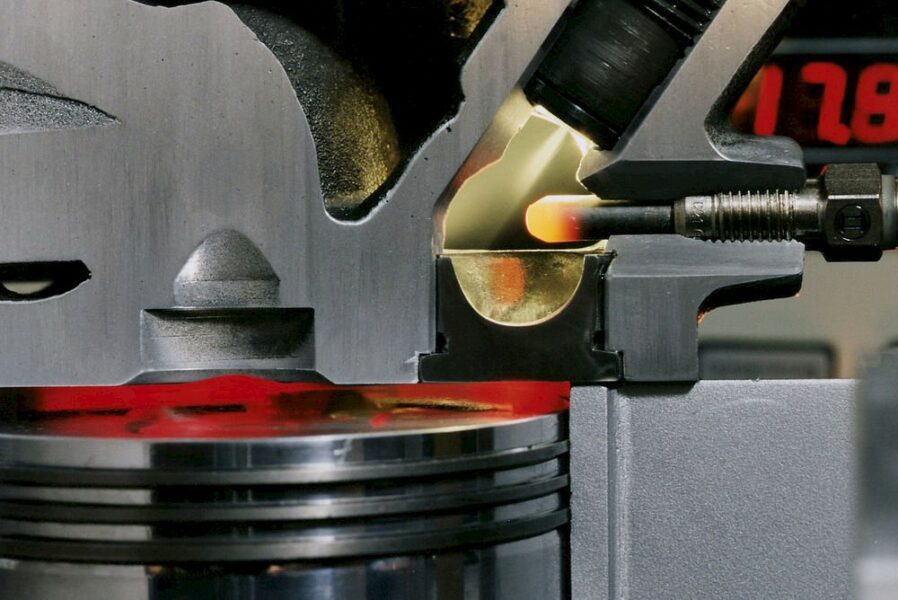
The most common parameter that determines the time to replace heating elements is vehicle mileage. The price of the simplest candles is available for most motorists with modest material wealth, but their working resource is limited to only 60-80 thousand kilometers. Ceramic modifications take longer to take care of - in some cases they do not deteriorate when they reach 240 thousand kilometers.
Despite the fact that the heating elements change as they fail, it is still recommended to replace them with the entire set (the exception is the installation of a defective part).
Here are the main causes of glow plug breakage:
- Natural wear and tear of the material. With sharp jumps in temperature from minus to extremely high, no material will last long. This is especially true for thin metal products;
- The metal pin may become soot;
- The glow tube may swell from high voltage;
- Errors in the process of installing a candle in a well. Modern models are very thin, and at the same time quite fragile, so the work on installing a new part must be done as carefully as possible. The master can overtighten the thread, because of which the part can remain in the well, and without special devices it will be impossible to dismantle it. On the other hand, during the operation of the power unit, combustion products accumulate in the gap between the spark plug well and the thread of the product. This is called candle sticking. If an inexperienced person tries to unscrew it, he will surely break it, so it is necessary that a professional replace it;
- The heating coil has broken;
- The appearance of corrosion as a result of an electrochemical reaction.
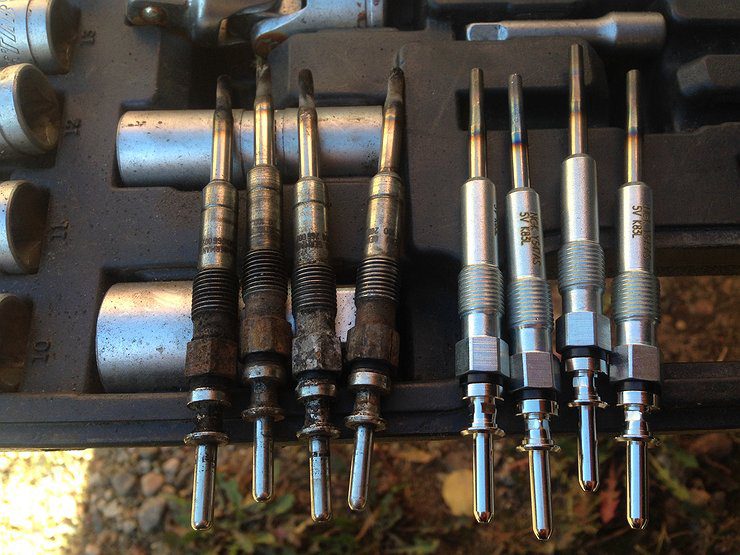
To avoid unpleasant situations associated with improper disassembly / assembly of parts, you should adhere to the following simple recommendations:
- Warm up the engine before changing the CH. It must be warm indoors or outdoors so that the internal combustion engine does not have time to cool down while new parts are screwed in;
- Since the motor will be hot, gloves must be used to avoid burns;
- When dismantling a candle, it is important to be no less careful than when screwing it into a well. During this procedure, a torque wrench should also be used to control the torque forces;
- If the part is stuck, you can not use more than the permissible forces. It is better to use penetrating liquid substances;
- An attempt to unscrew should be made on all candles. If none of them gives in, only then do we increase the effort;
- Before screwing in new parts, the spark plug wells and the area around them should be cleaned of dirt. In this case, you need to be careful so that foreign particles do not get into the cylinder;
- During the screwing process, this is done manually first to avoid a curve in the fit of the element. Then a torque wrench is used. The efforts are set in accordance with the manufacturer's instructions (indicated on the candle packaging).
Which shortens the life of the candles
As already mentioned, the working life of the CH depends on the operating conditions of the vehicle. Although these elements are quite hardy, they can still fail prematurely.
Here are some factors that shorten the life of these details:
- Errors during installation. It may seem to someone that there is nothing easier than unscrewing a broken part and screwing in a new one instead. In fact, if the technology for performing the work is not followed, the candle will not last a minute. For example, it can be easily broken by placing it in a candle well or stripping the threads.
- Malfunctions in the fuel system. In diesel engines, fuel injectors are used, which have a flare mode of operation (each modification forms its own form of a fuel cloud). If the atomizer becomes clogged, it will not properly distribute fuel throughout the chamber. Since the CH is installed near the nozzle, due to incorrect operation, diesel fuel can get on the glow tube. A large amount of soot provokes an accelerated burnout of the tip, which leads to breakage of the coil.
- Using non-standard spark plugs for a specific internal combustion engine. They can be identical in shape to the factory ones, but work from a different voltage.
- The presence of errors in the control unit, which may be the reason for incorrect heating of the cylinder cavity or failures in the fuel supply. Also, in engines that require major overhaul, oil is often thrown onto the tip of the glow tube.
- Due to the accumulated carbon deposits around the SN, a short to ground can occur, which leads to interruptions in the operation of the electrics of the ICE pre-start circuit. For this reason, it is extremely important to thoroughly clean the candle wells from soot.
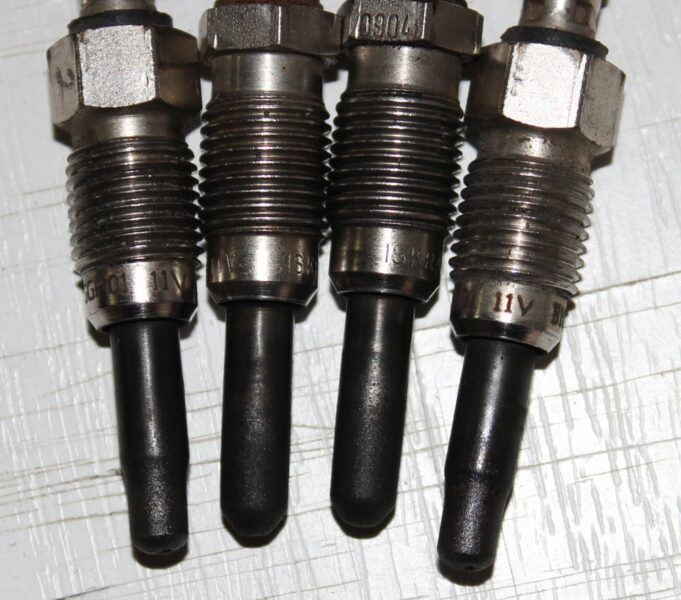
When replacement is performed, attention should be paid to the condition of the old elements. If the glow tube is swollen, it means that the old parts do not match the voltage in the on-board network (or there is a serious failure in it). Damage to the tip and carbon deposits on it may indicate that fuel gets on it, therefore, in parallel, diagnose the fuel system. If the contact rod is shifted relative to the MV housing, then the tightening torque was violated during the installation process. In this case, you should use the services of another service station.
Checking the glow plugs
Do not wait for the glow element to break. The breakage can be associated not only with the overheating of the coil. Overheated metal becomes brittle over time. Strong compression may cause the handpiece to split apart. In addition to stopping the spark plug from working, a foreign object in the cylinder can severely damage this pair in the engine (the mirror of the cylinder walls will collapse, a metal part can get between the piston and the bottom of the head, which will damage the piston, etc.).
Although this review lists the majority of CH failures, coil breaks are the most common. In the summer, the engine will not even show signs that this part has broken. For this reason, its preventive diagnostics should be carried out.
To do this, you need to use any modification of the tester. We set the resistance measurement mode. Before connecting the probes, you need to disconnect the supply wire (twisted from the output). With the positive contact we touch the output of the candle, and the negative contact with the motor itself. If the machine uses a model with two leads, then we connect the probes in accordance with the poles. Each part has its own resistance indicator. It is usually indicated on the packaging.
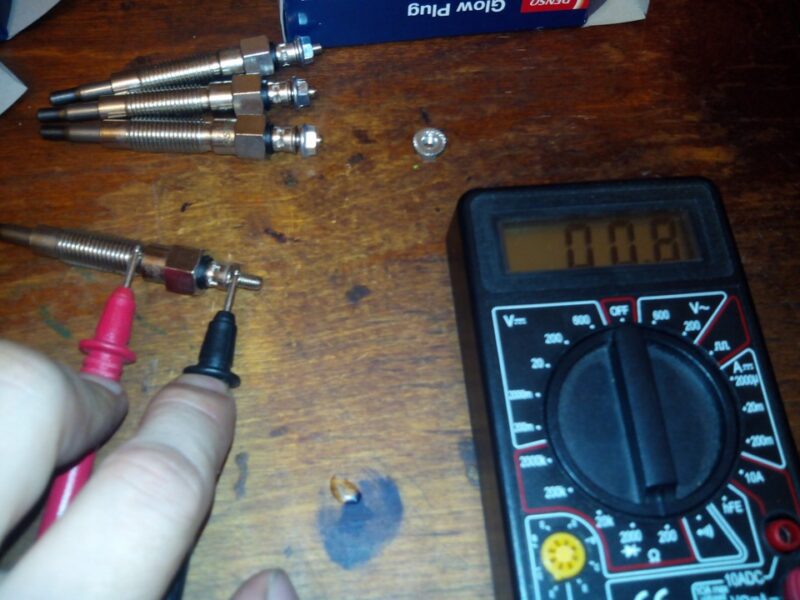
Without removing the device from the motor, you can also check in the dial mode. The multimeter is set to the appropriate position. With one probe we touch the output of the candle, and with the other - the body. If there are no signals, then the circuit is broken and the candle needs to be replaced.
Another way is to measure the current consumption. The supply wire is disconnected. We connect one terminal of the multimeter set to the ammeter mode to it. With the second probe, touch the output of the glow plug. If the part is serviceable, it draws from 5 to 18 amperes, depending on the type. Deviations from the norm are the reason to unscrew the part and check it using other methods.
The general rule should be followed when following the above procedures. If the wire supplying current is unscrewed, first of all you need to disconnect the battery so as not to accidentally provoke a short circuit.
The removed candle is also checked in several ways. One of them allows you to check if it is heating up or not. To do this, we connect the central terminal to the positive terminal of the battery, and put the minus on the device case. If the candle is glowing properly, then it is in good working order. When performing this procedure, remember that after disconnecting the part from the battery, it remains hot enough to get burned.
The following method can only be used on machines that do not have an electronic control unit. Disconnect the supply wire from the output. We are trying to connect it to the central contact with tangent movements. If a spark appears in the process, then the part is in good order.
So, as we saw, how stable the cold engine will work in winter depends on the serviceability of the glow plugs. In addition to checking the candles, before the onset of winter, you should also diagnose the engine and systems that are associated with its operation. The service station will help to identify faults in time that may affect the performance of the glow plugs.
In conclusion, take a look at the video review on how to check the performance of a glow plug:
Questions and answers:
How many spark plugs are there in a diesel engine? In a diesel engine, the VTS is ignited by injecting diesel fuel into the hot air from compression. Therefore, the diesel engine does not use spark plugs (only glow plugs for heating the air).
How often do diesel spark plugs change? It depends on the motor and operating conditions. On average, candles change between 60 and 10 thousand km. mileage. Sometimes they attend to 160 thousand.
How do diesel glow plugs work? They begin to work before starting the engine (the ignition of the on-board system is turned on), heating the air in the cylinders. After the engine warms up, they turn off.


